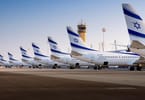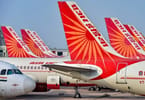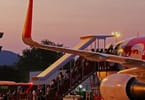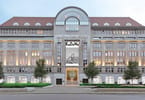A billboard on an Oakland city bus touts complimentary chauffer-driven limousine service for first- and business-class passengers flying to Dubai and beyond on Emirates Airlines. Although it might seem an unlikely place to plug an airline based 8,000 miles away, this is part of a much larger advertising campaign for a new nonstop flight linking this rapidly growing Middle East city with San Francisco, Emirates’ fifth gateway in North America.
Before the ads, few locals had likely heard of Emirates or Dubai. Then a radio blitz, newspaper ads and several well-publicized media events heralded the arrival of this new airline. In San Francisco’s financial district, the walls of an entire subway station were plastered with billboards and columns dressed up as palm trees to advertise exotic Emirates destinations. “Everybody in the San Francisco Bay Area knows who Emirates is today”, says Terry Brodt of Carlson Wagonlit Travel.
While everyone may now know the Emirates name, the real targets of the ad campaign are the corporate travel managers and travel agents serving the many high-tech, bio-tech and financial services corporations located in San Francisco and nearby Silicon Valley. Who else would pony up $11,000 or more to fly their corporate travelers in Emirates business class, or almost $18,000 for a private first-class suite on the 16-hour nonstop journey to Dubai and beyond?
Brodt was one of 500 special guests from the local business travel community invited to a lavish steak dinner party and dance recently hosted by Emirates, featuring Academy Award-winning actress Hilary Swank as mistress of ceremonies, and a live performance by Grammy Award-winning singer Sheryl Crow. “It was over the top,” says Brodt, who previously served as president of the Silicon Valley Business Travel Association. Brodt found it reminiscent of the “old days” when U.S. airlines routinely threw expensive parties for the business travel community when introducing a new route.
Emirates, which took flight in 1985, is one of several rapidly growing airlines based on the Arabian peninsula, a group that includes Abu Dhabi-based Etihad and Qatar Airways. These carriers boast brand new fleets of long-range, widebody aircraft and offer some of the finest service and accommodations in the sky. Emirates currently operates more than 120 new, widebody airplanes with almost 200 more on order, including 58 giant Airbus A380 aircraft, making Emirates the largest customer for the world’s largest passenger jet.
Armed with new fleets, Emirates and the other airlines in that region are well-positioned to compete for long-range premium global air traffic routed through their centrally located Middle Eastern hubs. The recent economic boom in India and Asia, along with the introduction of a new generation of economical long range aircraft, like the Airbus A380, the Boeing 777LR, and forthcoming Boeing 787 and Airbus 350, make nonstop travel viable between cities clear across the globe. Previously, to reach most cities in Africa, India or the Middle East, U.S. travelers connected through major European transfer airports, like Amsterdam, Frankfurt, London, or Paris.
“From Dubai you can reach almost any inhabited place on earth nonstop,” says Seth Kaplan of Airline Weekly. While Emirates and other Middle Eastern airlines may compete with U.S. airlines on some routes, it is the major airlines of Europe, namely Air France/KLM, British Airways, and Lufthansa, which are likely to be caught in the tug-of-war for global travelers if these new Middle Eastern carriers are successful in re-routing business travelers through their hubs.
While many European and Asian airlines are known for superior in-flight service, Emirates, Etihad, and Qatar Airways have eclipsed these offerings, winning numerous awards for excellence. They are rapidly becoming the favorites of many business travelers. Besides limousine service on the ground, Emirates offers gourmet dining, 1,000 channels of in-flight entertainment, and private first-class suites complete with fully stocked individual mini-bars. Their new Airbus A380’s have two showers on board with spas large enough to accommodate an entire family.
How can an airline afford such extravagance in the current economy when other airlines are cutting costs and services just to stay afloat? In many markets, Emirates can command a premium price. Kaplan believes business travelers will pay for a quality experience on a long flight and that Emirates can roll out high-quality business- and first-class products system-wide because most of their routes are long-haul. It is also far more cost effective to outfit a new airplane with the latest technology and in-flight amenities, while there is less benefit upgrading an older airplane closer to retirement.
Emirates and the other airlines in that region have another huge advantage over U.S. and European airlines. From Dubai, Emirates serves ten nonstop destinations in India, four cities in Pakistan, more than a dozen cities in the Middle East, a similar number of African destinations, more than 20 European cities, and another 20 or so ports of call in Asia and the Pacific. No European airline covers that breadth and depth of destinations outside Europe, and all U.S. airlines combined serve only two cities in India and four in the Middle East, with Delta as the only U.S. airline flying to Africa.
Additionally, Kaplan says Dubai is very supportive of Emirates, with a new airport that is expanding to handle 70 million passengers annually, making it one of the busiest in the world. Dubai also has open skies, making it easier for Emirates to expand in other countries that reciprocate. Finally, Dubai has lower aviation taxes and fees than many other places. There might be less than $100 in taxes and fees on a typical long-haul flight from the U.S. to or through Dubai, while those same taxes and fees can be $400 transferring through London Heathrow or Frankfurt. Thus, Emirates can charge the same price as British Airways or Lufthansa and pocket the difference.
Emirates is owned by the government of Dubai, which many consider to be an unfair advantage, but Emirates is run like a business and reports financials as an independent company. For the 2007-08 fiscal year ending March 31, Emirates earned a $1.45 billion profit. For the first six months of fiscal 2008, Emirates’ earnings were down to $77 million as a result of higher fuel prices, but with depressed oil prices, profits could rebound if Emirates’ 78% load factor persists.
Despite initial success, some industry experts are skeptical of Emirates’ ambitious expansion plans. Dubai’s population (estimated at 1.7 million by the official United Arab Emirates website) is not large enough to support all those new aircraft on order, according to Adam Pilarski of AVITAS, an aviation consulting firm. “Clearly, they will not be flying their own people,” he says. Pilarski believes Emirates will need to rely on a higher percentage of connecting traffic through Dubai than competing hubs in London or Paris, which draw from much larger local populations.
If Emirates succeeds, some European airlines will shrink, according to Pilarski. “With falling demand, way too many planes have been ordered,” he says. “Something has to give.” But if current economic conditions persist, “a number of Middle Eastern carriers will be canceling aircraft orders,” he predicts, and that could include Emirates.
WHAT TO TAKE AWAY FROM THIS ARTICLE:
- airlines on some routes, it is the major airlines of Europe, namely Air France/KLM, British Airways, and Lufthansa, which are likely to be caught in the tug-of-war for global travelers if these new Middle Eastern carriers are successful in re-routing business travelers through their hubs.
- The recent economic boom in India and Asia, along with the introduction of a new generation of economical long range aircraft, like the Airbus A380, the Boeing 777LR, and forthcoming Boeing 787 and Airbus 350, make nonstop travel viable between cities clear across the globe.
- While everyone may now know the Emirates name, the real targets of the ad campaign are the corporate travel managers and travel agents serving the many high-tech, bio-tech and financial services corporations located in San Francisco and nearby Silicon Valley.






















